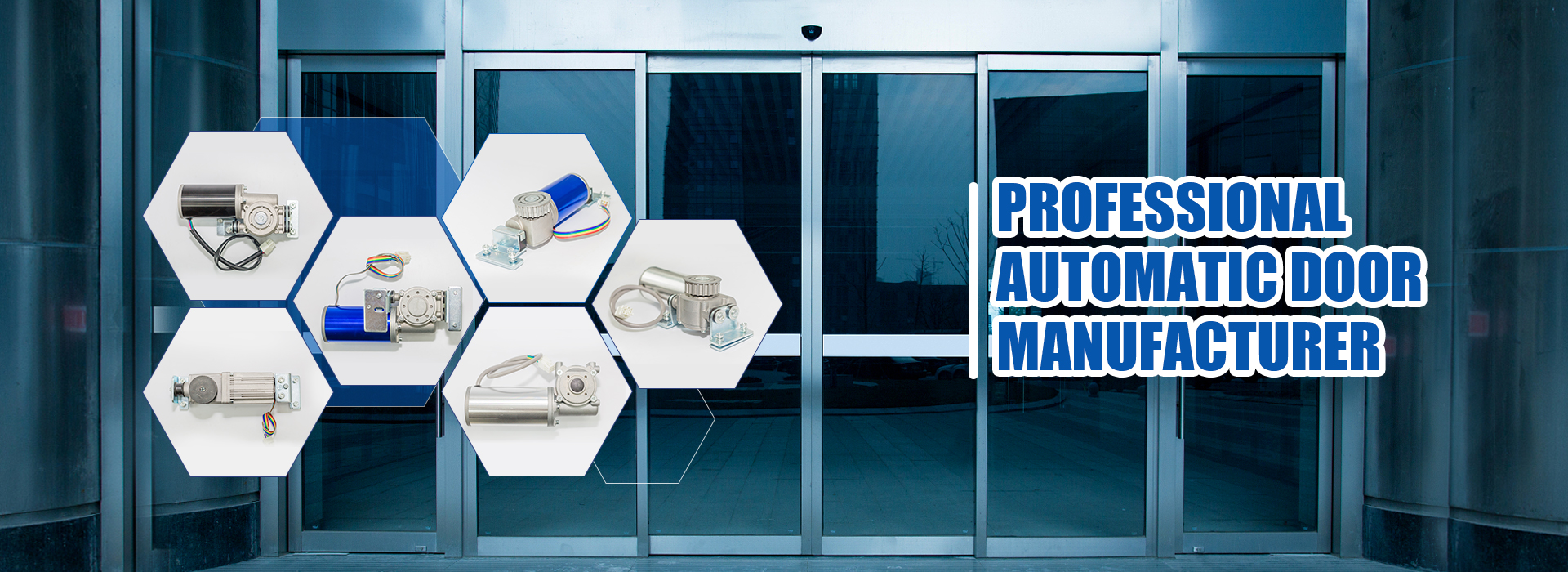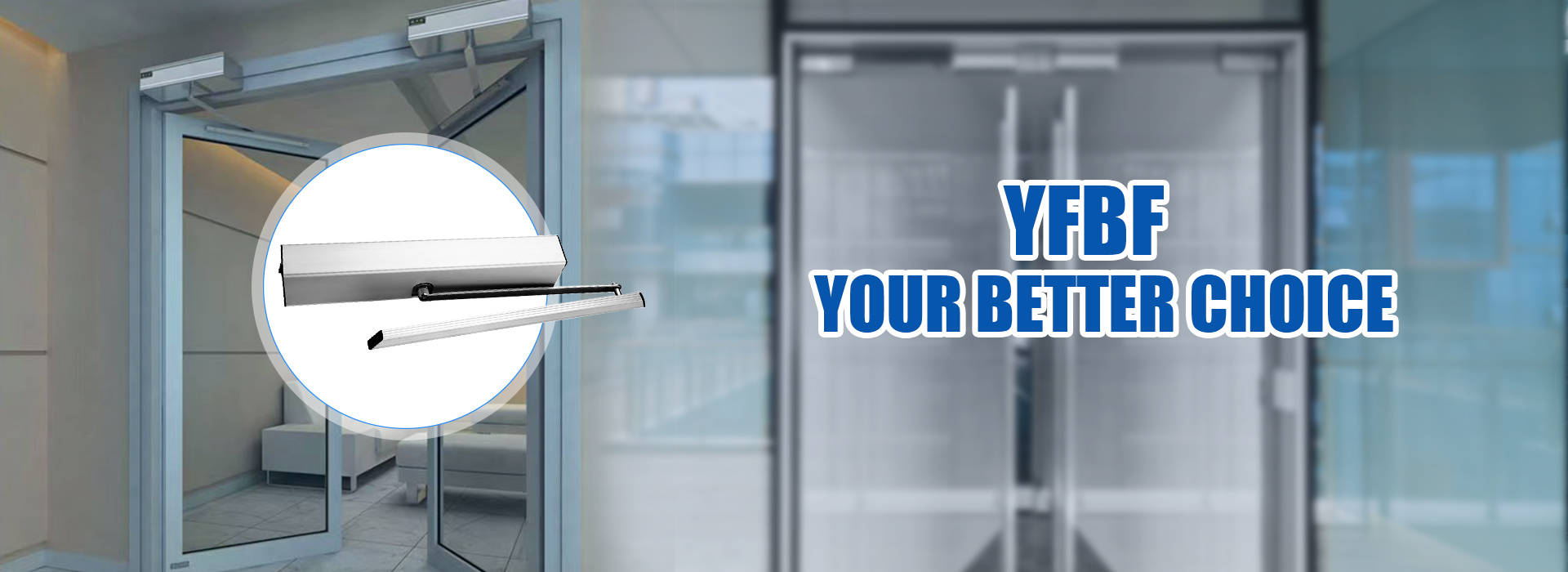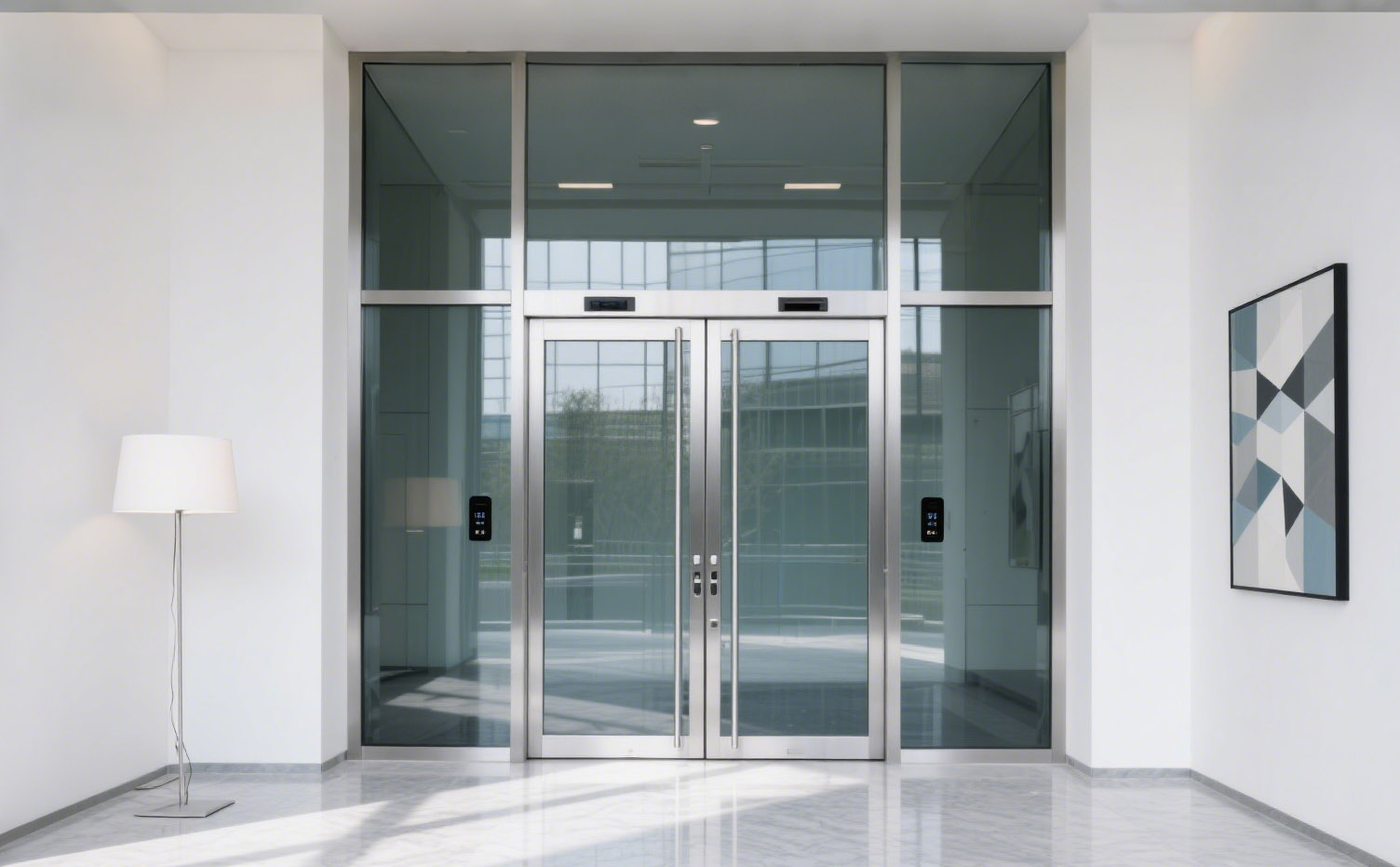
An Automatic Swing Door Motor impresses users with its advanced technology, strong safety features, and reliable performance. High-quality motors from trusted manufacturers support long lifespans. Regular inspections, proper installation, and careful maintenance keep these doors working smoothly. Smart design allows for easy operation, making daily access simple and secure for everyone.
Key Takeaways
- Automatic swing door motors use advanced sensors to detect motion and obstacles, ensuring smooth and safe door operation for all users.
- Strong safety features like anti-pinch protection and emergency release mechanisms prevent injuries and allow quick manual door opening during emergencies.
- Durable materials and weather-resistant designs extend motor lifespan, while smart controls and easy installation improve convenience and accessibility.
Automatic Swing Door Motor Sensor Technology
Motion Detection
Modern automatic swing door motors rely on advanced sensor technology to deliver a seamless and safe experience. Motion detection stands at the heart of this innovation. These systems often use a combination of active infrared sensors and Position Sensitive Detection (PSD) technology. This pairing allows the door to sense people approaching from either side, adjusting the detection zone for precise coverage. The sensors quickly identify movement, triggering the door to open smoothly and efficiently.
Many doors also use radar or microwave sensors. These sensors detect motion using the Doppler effect, making them ideal for busy or outdoor spaces. Infrared sensors, on the other hand, excel in controlled indoor environments. They detect the heat signatures of people, ensuring accurate activation even when someone stands still near the door. Some systems combine both sensor types to maximize accuracy and reduce false triggers.
Tip: Combining infrared and microwave sensors helps the door respond only to real movement, not to random objects or environmental changes.
Here is a comparison of the two main sensor types:
| Feature | Infrared Sensors | Microwave Sensors |
|---|---|---|
| Detection Mechanism | Detect heat signatures and movement of warm objects | Detect motion via Doppler effect, sensitive to all motion including inanimate objects |
| Accuracy | Precise detection of stationary warm objects at close range | More sensitive to any motion but can be prone to electromagnetic interference |
| Range | Short to medium range | Longer range |
| Interference Susceptibility | Affected by sunlight, temperature changes, and obstructions | Prone to interference from electromagnetic signals |
| Best Use Cases | Controlled indoor environments, low-traffic areas | High-traffic areas, outdoor use, large spaces |
Recent advancements include vision sensors and AI integration. These technologies allow the door to recognize and track individuals with high accuracy. Smart features like predictive motion analysis and adaptive learning make the door even more responsive to user habits.
Obstacle Recognition
Safety remains a top priority for any automatic swing door motor. Obstacle recognition sensors play a crucial role in protecting users. These sensors, often mounted on the door frame, detect objects or people in the path of the moving door. When the sensor identifies an obstacle, the door stops or reverses direction within half a second. This rapid response prevents accidents and ensures everyone’s safety.
Obstacle recognition technology uses a mix of infrared, microwave, and beam sensors. These sensors can spot not only adults but also small children and pets. The system adapts to different door types and environments, maintaining reliable detection even in changing light or temperature conditions.
- Infrared sensors scan for heat and movement.
- Beam sensors create an invisible barrier that triggers the door to stop if broken.
- Wireless pet sensors add extra protection for small animals.
The sensors adjust their area and angle automatically, compensating for sunlight, vibration, or darkness. This self-adaptive feature keeps the door safe and reliable at all times.
Note: Fast obstacle recognition means the door reacts in less than 500 milliseconds, meeting strict safety standards.
With these advanced sensor technologies, an automatic swing door motor offers both convenience and peace of mind. The system ensures smooth entry while keeping everyone safe, making it a smart choice for any building.
Automatic Swing Door Motor Safety Features
Anti-Pinch Protection
Safety stands as the top priority for any automatic swing door system. Modern motors use advanced anti-pinch protection to keep users safe. Engineers design these systems to prevent fingers, hands, or clothing from getting caught between the door and the frame.
Manufacturers use servo motors with built-in anti-pinch technology. These motors sense resistance and stop the door instantly. This quick response helps prevent injury and loss of control. Some systems use infrared sensors to detect people or objects near the door. When the sensor picks up movement, the control system stops the door before contact happens. This combination of smart sensors and intelligent controls creates a stable and reliable safety barrier.
Tip: Anti-pinch protection works best when paired with a high-performance power supply. This setup prevents faults and hidden dangers, keeping everyone safe.
Safety standards guide the design of these systems. The UL 325 standard requires at least two types of entrapment protection for every pinch point. These include non-contact sensors like photo eyes and contact sensors. European and Chinese standards also demand anti-pinch devices and regular safety inspections. These rules ensure that automatic swing door motors protect users from harm, especially vulnerable groups like children and seniors.
| Safety Feature | Description |
|---|---|
| Servo Motor Anti-Pinch | Stops door instantly when resistance is detected |
| Infrared Sensor Detection | Senses people or objects, stops door movement |
| Dual Protection Requirement | Meets UL 325, EN 16005, and GB/T 32773-2016 |
Emergency Release Mechanisms
Emergency release mechanisms add another layer of safety. These features allow users to open the door manually during power outages or emergencies. Designers include easy-to-use release levers or switches. Anyone can operate these devices without special training.
In case of fire or electrical failure, the emergency release lets people exit quickly. The system disengages the motor and unlocks the door. This action ensures a clear path for evacuation. Regular safety inspections check that emergency releases work as intended.
Note: Emergency release mechanisms must remain accessible and visible at all times. Proper installation and maintenance guarantee fast and safe operation during critical moments.
Building codes and safety standards require emergency release systems in automatic swing door motors. These rules protect everyone inside the building. Facility managers should test emergency releases often to maintain safety and compliance.
Automatic Swing Door Motor Durability and Build Quality
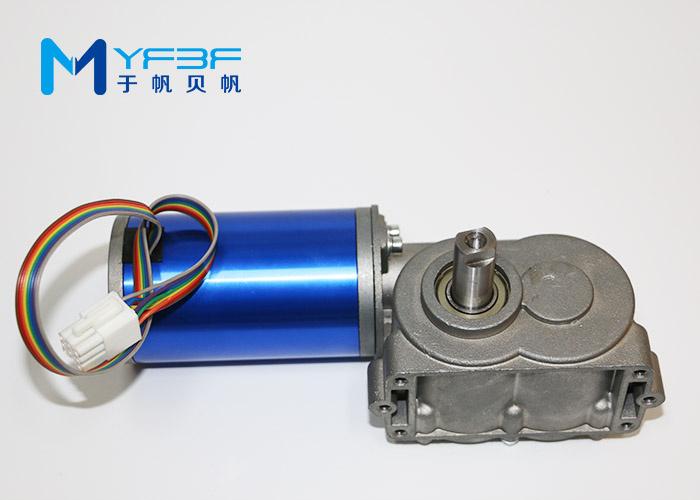
Heavy-Duty Materials
Manufacturers choose heavy-duty materials to ensure long-lasting performance. Stainless steel stands out for its strength and resistance to rust. This material keeps the motor working well in harsh environments and reduces the need for repairs. Aluminum offers a lightweight option that still resists corrosion, making it perfect for large doors where weight matters. Some motors use engineered plastics for parts that need to be light and tough. The right material helps the motor handle heavy doors and tough conditions. When companies select materials that match the environment, they boost safety and lower maintenance costs.
Tip: Stainless steel and aluminum both help prevent rust and damage, keeping the door motor reliable for years.
Weather Resistance
Weather can challenge any door system. Rain, snow, and heat all put stress on the motor. Water can get inside during heavy storms, causing short circuits or rust. Hot weather may overheat the electronics, while cold can make lubricants thick and slow the door. Strong winds might push the door out of place, straining the motor. Most automatic swing door motors last 10 to 15 years with good care, but harsh weather can shorten this by up to 40%. Regular maintenance and weather-resistant designs help protect the system. Sealed housings and corrosion-resistant parts keep the motor safe from moisture and temperature swings.
- Average lifespan: 10 to 15 years with proper care
- Extreme weather can reduce lifespan by 30-40%
- Water, heat, and cold are the main threats to motor health
A durable Automatic Swing Door Motor stands up to the elements, giving users peace of mind in any climate.
Automatic Swing Door Motor Versatility and Compatibility
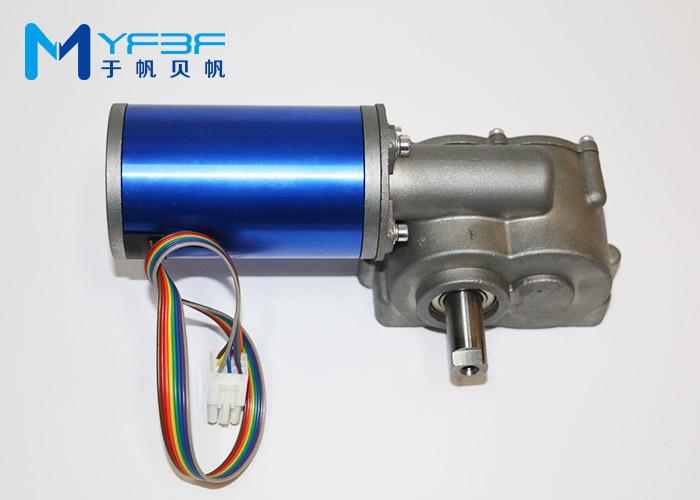
Adaptability to Different Door Types
A high-performing Automatic Swing Door Motor adapts to many door styles. Facility managers choose these motors for their flexibility. They work with:
- Single doors
- Double doors, including pair and double egress
- Specialty doors
Installers fit these motors to doors with butt, offset, or center pivoted hinges. Doors swing inward or outward, and some feature panic breakaway for emergencies. This adaptability means users can upgrade existing doors without major renovations.
A motor system handles doors of different weights and sizes. The table below shows how these motors accommodate various configurations:
| Feature | Details |
|---|---|
| Door Width Compatibility | 26″ to 47.2″ |
| Maximum Door Weight | Up to 220 lbs (100 kg) |
| Opening Angle | Adjustable up to 120 degrees |
| Adjustable Arms | Pull-to-open or push-to-open |
| Hold-Open Time | 1 to 30 seconds |
| Material | Aluminum alloy, stainless steel, cast iron |
Installers program the motor to match the door’s needs. They adjust speed, strength, and hold-open time for safety and convenience. Durable materials resist corrosion and wear, making the motor a smart investment.
Tip: Choose a motor with programmable options to handle challenging installations and ensure long-term reliability.
Integration with Access Control Systems
Modern buildings require secure entry. Automatic swing door motors integrate with access control systems to meet this need. They support protocols like Wiegand and RS485, allowing seamless communication with security networks. Safety sensors and building automation protocols enhance protection.
- Electric strikes and latch retraction kits enable secure locking.
- Programmable logic controllers customize door opening sequences.
- Compatibility with existing security frameworks ensures smooth operation.
Reliable communication between the motor and access control system prevents unauthorized access. Routine maintenance and backup power systems keep doors secure during outages. Facility managers value these features for their ability to protect people and property.
Note: Integration with access control systems boosts security and convenience, making these motors ideal for commercial and residential settings.
Automatic Swing Door Motor Installation and User Experience
Simple Setup Process
A smooth installation process saves time and reduces frustration. Many users appreciate clear instructions and included mounting hardware. Installers often face challenges such as wall reinforcement, cable management, and space constraints around the door frame. Choosing a motor that comes with a compact design and a universal bracket helps overcome these issues. Installers can select the correct mounting side for push or pull applications, ensuring the system fits a variety of doors. Proper integration of door stops prevents damage from doors swinging open too far. When the motor matches the door’s weight and width, performance remains reliable. Manufacturers who provide troubleshooting guides and step-by-step tips make the process even easier.
Tip: Always check that the door opener meets fire and escape requirements before starting installation.
Intuitive User Controls
User-friendly controls transform daily access into a seamless experience. People prefer systems with multiple operating modes, each indicated by colored LEDs for clear feedback. Bluetooth connectivity and remote monitoring through a dedicated app allow users to control the door from anywhere. Voice assistant compatibility, such as with Alexa or Siri, enables hands-free operation. Integration with access control systems, including magnetic locks and electric strikes, supports secure entry. Safety features like auto-reverse protect users if the door encounters an obstacle. Built-in speakers provide voice and audio alerts, keeping everyone informed.
| Feature/Benefit | Explanation |
|---|---|
| Touchless & WiFi Connectivity | Hands-free and remote operation for convenience and accessibility. |
| Voice Assistant Integration | Simple voice commands for easy door operation. |
| Multiple Control Options | Remote, wall switch, push button, and app control for flexibility. |
| Easy Parameter Adjustment | LED display for simple customization and debugging. |
| Enhanced Hygiene | Reduces surface contact, promoting a healthier environment. |
A well-designed Automatic Swing Door Motor offers these intuitive controls, making access easy for everyone, including those with mobility challenges.
Automatic Swing Door Motor Smart Controls and Integration
Remote Operation Options
Smart controls transform the way people interact with automatic doors. Remote operation options offer unmatched convenience and flexibility. Users can choose from a variety of methods to open and close doors without touching them.
- RF remotes send signals directly to a receiver, allowing users to operate the door from a distance.
- Sensor-based activations include push buttons, hand sensors, passive infrared body sensors, and foot sensors. These options provide touchless entry, which improves hygiene and accessibility.
- Accessories such as access keypads, card readers, and electric locks add extra layers of security and control.
- Universal RF remotes and WiFi controllers enable smartphone app control, making it easy to manage doors from anywhere in the home.
- Manual operation remains possible during power outages, ensuring reliable access at all times.
Smart systems also allow users to adjust door parameters, such as opening speed and direction, through simple hand programmers or mobile apps. Voice assistant integration, timing functions, and wireless connectivity further enhance the user experience.
Tip: Remote operation options make daily routines easier, especially for families, seniors, and people with mobility challenges.
Connectivity with Smart Home Systems
Integration with smart home platforms brings doors into the heart of modern living. These systems connect with popular voice assistants like Alexa, Google Assistant, and Siri, allowing hands-free operation through simple voice commands.
- Doors can synchronize with smart home routines, such as locking automatically when security cameras detect unusual activity.
- Activation methods include remotes, wall switches, motion sensors, RFID tags, and smart triggers, all of which can be part of home automation.
- Some systems require bridges or relays for connection, while others offer native compatibility with smart home hubs.
- RFID technology enables hands-free access for users and pets, linking door actions to schedules and commands.
- Integration with IoT devices helps improve energy efficiency by adapting to environmental changes, such as closing doors when the air conditioning is on.
- AI and machine learning features allow doors to learn user routines, adjusting locking and unlocking based on daily habits.
Smart home connectivity ensures seamless control, improved security, and a personalized experience for every household.
Automatic Swing Door Motor Real-World Applications
Commercial Building Use Cases
Businesses rely on automatic swing doors to create safe, welcoming entrances. Hospitals use these doors to help patients and staff move quickly and safely. Retail stores install them to improve customer flow and boost accessibility. Hotels choose automatic doors to offer guests a smooth arrival experience. Office buildings benefit from these systems by making entry and exit easier for employees and visitors.
Different operating modes suit various needs.
- Full energy mode works best for busy entrances, providing fast movement and strong safety features.
- Low energy mode fits smaller spaces like bathrooms or apartments, focusing on gentle operation for people with disabilities.
- Power assist mode lets users open doors with little effort, which helps those who struggle with heavy doors.
- Push and go mode activates the door when someone starts to open it manually.
Businesses see fewer accidents and better energy efficiency when they install automatic swing doors. These systems help companies meet accessibility laws and create a modern, professional image.
Residential and Accessibility Benefits
Homeowners choose automatic swing doors to make daily life easier. People with mobility challenges gain independence because these doors reduce physical effort. The system offers smooth and reliable movement, lowering the risk of injury. Safety features prevent doors from closing too quickly, keeping everyone safe.
Residents enjoy hands-free options. RFID tags allow users to open doors without touching them. Voice control works with smart assistants, letting people use simple commands to operate doors. The system adapts to many door types, making installation easy in most homes.
- Smooth operation supports independence for seniors and people with disabilities.
- Safety features protect children and pets.
- Voice and RFID controls add convenience for busy families.
Automatic swing doors help families create safer, more accessible homes. They support freedom and comfort for everyone.
Choosing the right Automatic Swing Door Motor ensures safety, durability, and convenience. Key features include strong safety sensors, remote control options, and weatherproof construction. The table below highlights what to consider:
| Feature | Why It Matters |
|---|---|
| Safety Features | Prevents accidents |
| Motor Type | Impacts efficiency and power |
| Remote Control | Adds convenience and security |
| Durability | Extends product lifespan |
Prioritize these qualities for a smart investment.
FAQ
How long does an automatic swing door motor usually last?
Most automatic swing door motors deliver reliable service for up to 10 years. Regular maintenance extends the lifespan and ensures smooth, quiet operation.
Can these motors work with smart home systems?
Yes. Many automatic swing door motors connect with smart home platforms. Users enjoy voice control, app integration, and remote access for added convenience.
What safety features protect users?
Manufacturers include obstacle detection, anti-pinch technology, and emergency release mechanisms. These features keep everyone safe and help prevent accidents.
Tip: Always choose a motor with certified safety features for peace of mind.
Post time: Aug-13-2025

